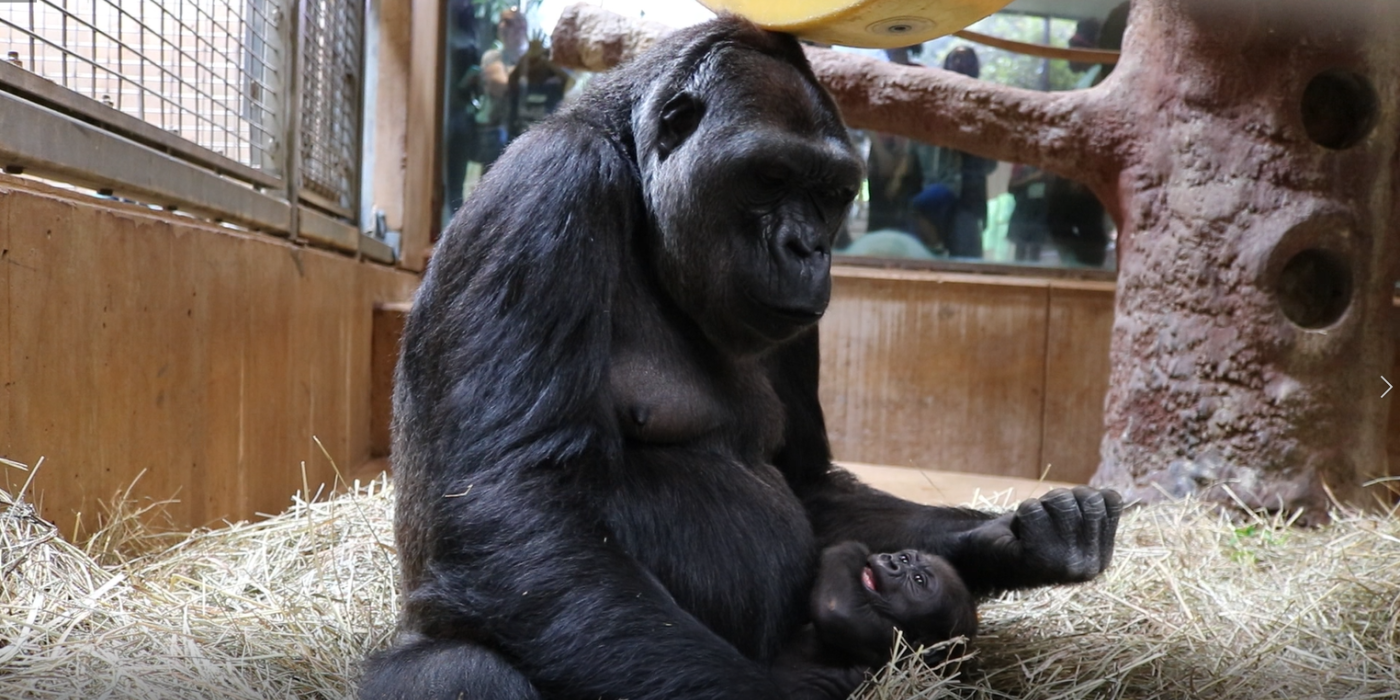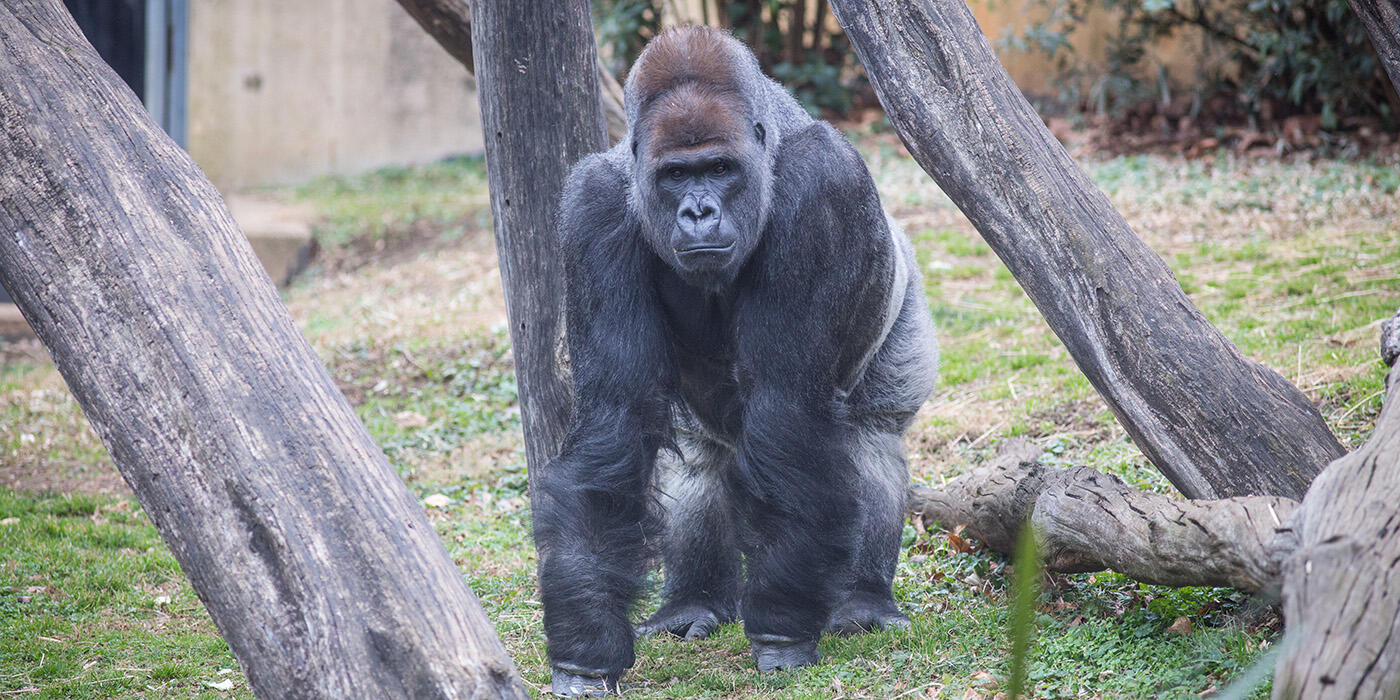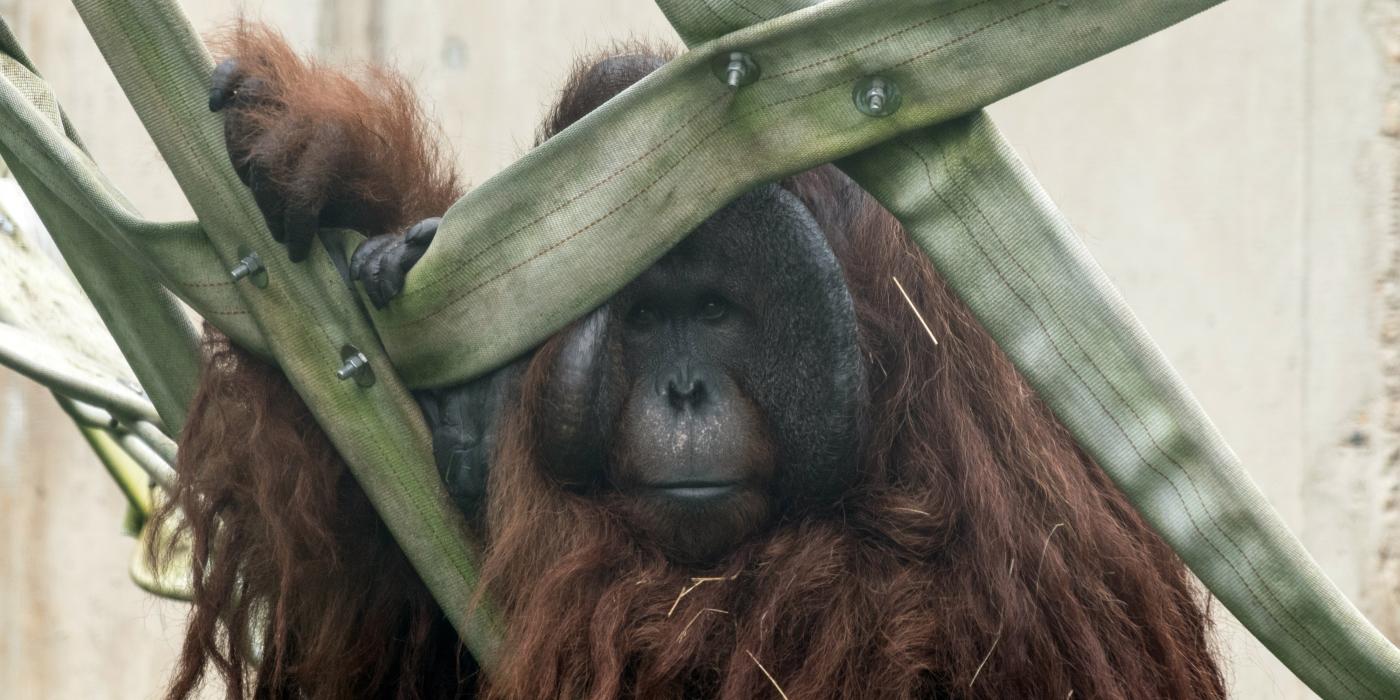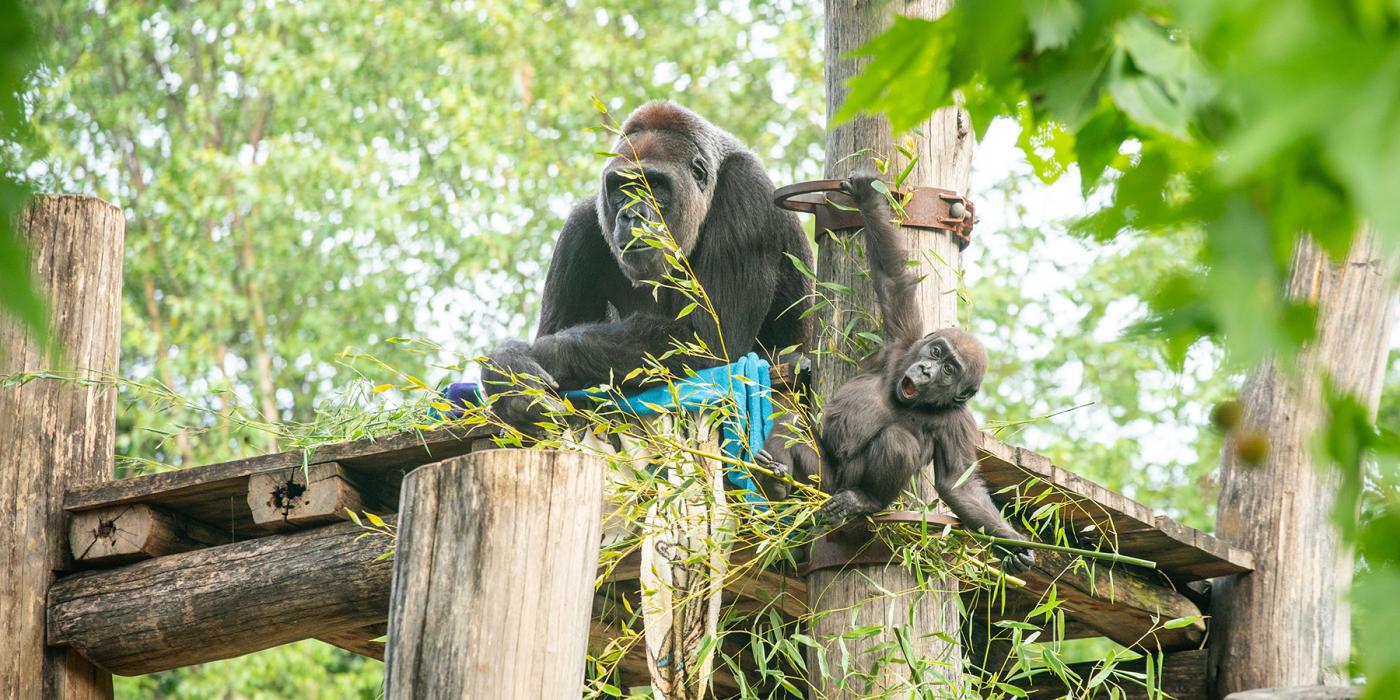#GorillaStory: Moke is Teething
In the past two weeks, our western lowland gorilla infant, Moke, has sprouted two new teeth. When he was five weeks old, the primate team observed two lower incisors break through his gums. Now, at 7 weeks old, he has two new upper incisors!
Primate infants tend to explore the world with their mouths, so it is no surprise that Moke is interested in testing out his new chompers. Over the past week, he has shown an interest in Calaya’s food. Not surprisingly, whenever he picks it up, Calaya takes the morsel before he can mouth it and eats it herself. Moke is quick to express his displeasure by having tiny tantrums. They only last a few seconds, though, before she comforts him.
Gorilla infants typically nurse for about three years, and they begin trying food around six months of age. However, I would not be surprised if Moke samples some solid foods before he turns 6 months old. When Moke tries to nurse now, there are times when Calaya will brush him away from her chest. It is clear that his new teeth are making nursing uncomfortable at times for her. Still, she is very patient with him. After he adjusts his mouth, he is able to nurse normally.
He continues to grow larger, stronger and more alert every day, so it is clear that he is not having any difficulties nursing. Often, after a nursing session, we will see his eyes get heavy, his head nod and a nap quickly ensue—a sure sign of a full belly.
Related Species:




